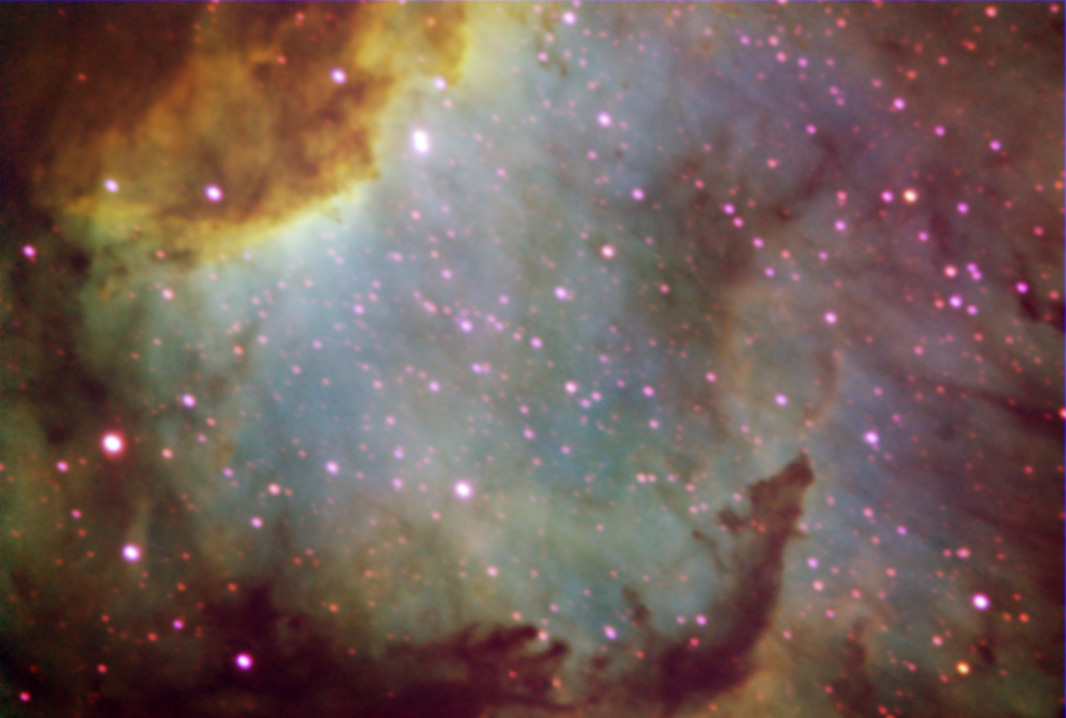N.Am. Nebula (Yucatan)
S[II]:H-alpha:O[III]

N.Am. Nebula (Yucatan)
S[II]:H-alpha:O[III]:
The North America Nebula is in the constellation Cygnus, about 3° from the star Deneb. The entire nebula has an area of more then four times the size of the full moon, but the field of view of this image is just a fraction of the nebula - an area of less then half a full moon, centered near the "Yucatan" part of North America. This image is the combination of three images taken with narrow-band filters, showing the presence of singly ionized sulfur (S[II]) in red, atomic hydrogen (H-alpha) in green, and doubly ionized oxygen (O[III]) in blue. This color selection is often called the Hubble palette, because this was the choice of colors used in the early Hubble photo of the Eagle nebula.
NGC: 7000
Right Ascension: 20h 57m 38s
Declination: 43d 26m 41s
Apparent Magnitude: 4, for the entire nebula
Date: June 2014
Equipment:
Telescope: Meade 16" Schmidt Cassegrain with f6.3 reducer
Camera: SBIG ST-10XE
Guiding: Meade 5" refractor; Starshoot Autoguider; PHD
Exposure:
20x10 min S[II], binned 2x2 (red)
14x10 min H-alpha, binned 2x2 (green)
16x10 min O[III], binned 2x2 (blue)
Processing Notes: Data acquisition with CCDSoft. Reduction, and alignment in CCDStack. Data selection and combination with Sigma Combine. Slight smoothing in dimmer areas and slight sharpening in the stars. Individual color components were combined and aligned in Photoshop. Curves applied for color balance.
Scale: 1.06"/pixel
Links to images of this object on other sites:
http://apod.nasa.gov/apod/ap000501.html
Additional Comments: Data acquisition and processing of this image was a collaborative effort between summer Space Grant students Gayle Owen, Theo Wecker, Kevin Graves, and Geoff Johnson. This color stack was assembled by Charles Hakes. Still need to take more H-alpha frames after some guiding issues have been resolved. Need to "round and minimize" the stars in the individual frames - especially the S[II] and the O[III]. Need to acquire luminance data to increase the overall resolution. Possibly will acquire RGB data to add star colors to the image.
Views: 633
 This work is licensed under a Creative Commons Attribution-NonCommercial-ShareAlike 4.0 International License.
This work is licensed under a Creative Commons Attribution-NonCommercial-ShareAlike 4.0 International License.

